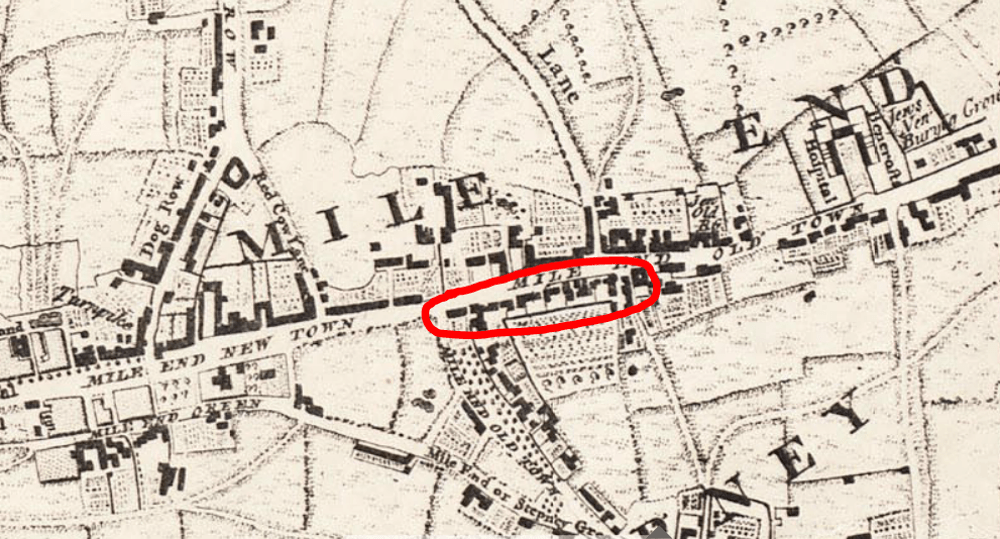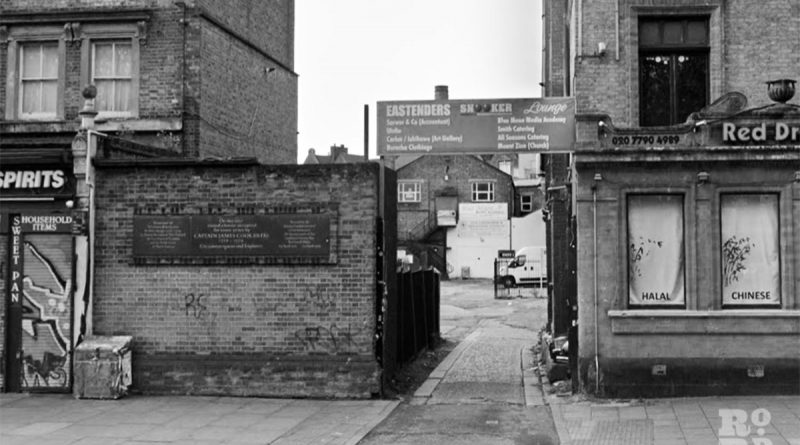Captain Cook’s east London home on Mile End Road
Captain James Cook (1728-1779) is one of Britain’s most celebrated explorers. His voyages took him from Newfoundland in North America to the extremities of New Zealand. Of course, even the most buccaneering adventurers need somewhere to call home, and Cook’s happened to be in Mile End.
Although born in Yorkshire, as an adult Cook made his home in London. From 1764 until his death, Cook’s home was on Assembly Row, at what is now 88 Mile End Road. Today that would place it diagonally opposite from Genesis Cinema backing onto the car park behind Rinkoff’s Bakery, but in the 1700s, East London wasn’t yet the industrialised working class powerhouse it was destined to become. Cook’s era was more Trinity Green than Bryant and May.
London was so much smaller back then that Cook was practically out in the countryside. Although Mile End Road was lined with property, the space around them was almost entirely farmland. Cook’s experience of East London was rather genteel.
He married Elizabeth Batts, the daughter of the owner of the Bell Inn in Wapping, on 21 December, 1762. They had met when Cook stayed at the inn with the Royal Navy. They relocated to Mile End as their family grew, and worshipped at St. Paul’s Shadwell.
Cook died in 1779 while attempting to kidnap Hawaii’s monarch so islanders would return a stolen boat (no really), and Elizabeth Batts Cook moved away from Mile End. A shop was built on the front of the house in the 18th century. Over the years it was used as a women’s clothing shop and a butchers, among other things.
A plaque was affixed to the building in 1907, then the entire thing was demolished in 1959 to improve access to a car park behind the property. All that remains now is the plaque. Its three parts read:
He surveyed the
Saint Lawrence River in 1759
In Three voyages 1768-1779
he charged the coasts of New Zealand,
the East Coast of Australia
and the Pacific Coast
of North America
*
On this site
stood a house occupied
for some years by
CAPTAIN JAMES COOK R.N. F.R.S.
1728 – 1779
Circumnavigator and Explorer
*
Erected by the
Greater London Council
to commemorate
the bicentenary of his
landing at Botany Bay
New South Wales
29th April 1770 29th April 1970
To see images of the beautiful old shop front read this article on Captain Cook’s home from Spitalfields Life. Although there are occasional calls for the house to be rebuilt, these images are likely the best preservation the site can expect now.

If you enjoyed this piece you may like reading about House Mill, the oldest surviving mill on the River Lea


